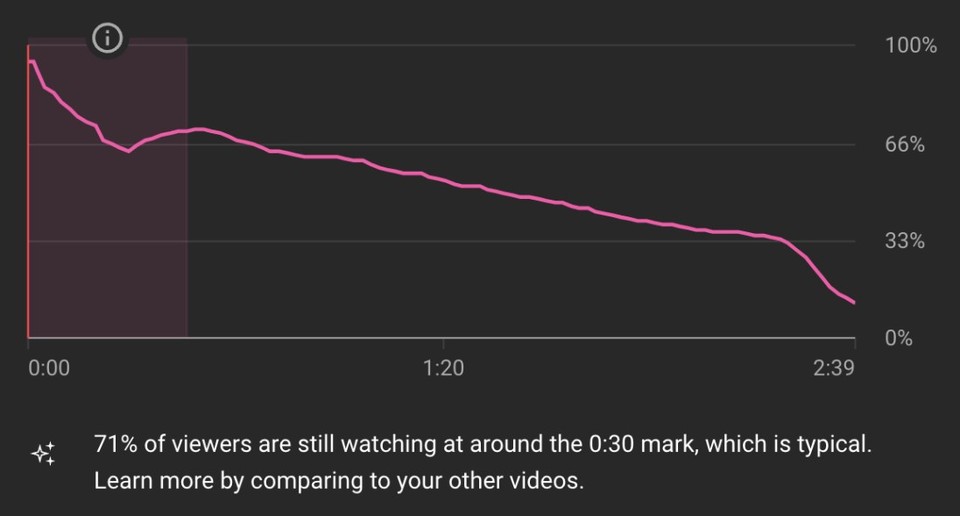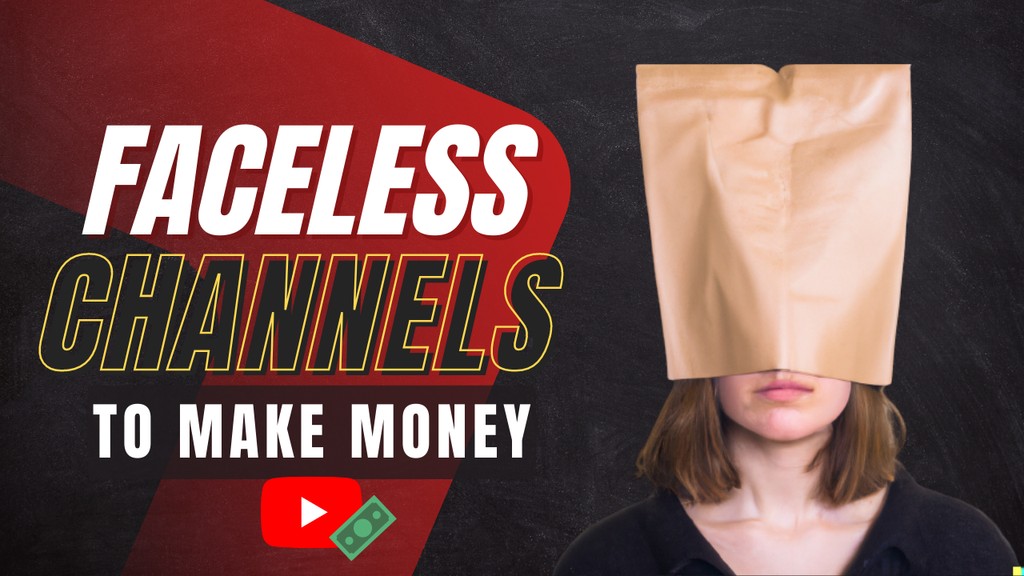Introduction
If you want to make a YouTube video go viral, you need to make sure your audience watches it from start to finish, and for this, you need a solid video script. Today, I'm going to guide you on exactly how to write a video script that will boost your audience retention and keep those precious watch times rising.

Why You Need a Script for Your Video
Earlier, I used to create YouTube videos, I just pressed record, said whatever came to my mind, and then hit upload. Sound familiar? While this spontaneous approach works for a few (it didn't work for me, lol), most of us need a guiding plan—a script. Writing a video script helps you stay on track, deliver value, and ensure your audience feels that you're talking directly to them. A well-thought-out video script means increased watch time, better engagement, and, ultimately, more subscribers.
Whether you're struggling with your intro, battling with boring content, or you don't know where to start, don't worry. By the end of this article, even if you've never written video scripts before, you'll be scripting like a pro.
How to Write a Video Script that Can Go Viral
Step 1: Research is Key
One of the main reasons many creators struggle to start writing their video scripts is a lack of research. Research is your foundation. Before you write a single word, you need to understand your topic, your target audience, and the message you want to convey. Here's how to start:
1. Define Your Topic
Begin by identifying the main theme of your video. For example, "How to Write YouTube Titles with ChatGPT." Write it boldly at the top of your page. This is your North Star.
2. Break It Down into Bullet Points
Now, jot down sub-topics or points that you want to cover. This gives your video scripts a structure. Let's say you're making a video on "5 Mistakes New YouTubers Make," you might list points like "choosing the wrong niche," "poor audio quality," etc. Each of these becomes a building block for your video script.
3. Leave Space for Expansion
Under each point, leave enough room for elaboration. Break down each main point into smaller pieces—the "why" and the "how." For example, under "choosing the wrong niche," list why this happens, the consequences, and how to choose the right niche instead. The more detailed your research, the easier the next step becomes.
Step 2: Writing the Video Script
Now that you've got your research ready, it's time to write. An effective video script generally has three key parts:
The intro,
The content, and
The call to action (CTA).
Hook in the first 30 seconds, or go home!
⚠️ The first 30 seconds of your video are the most important part of your video!!!
Even YouTube highlights this in YouTube Studio; check the following screenshot:

But why is this so important?
Your intro is your hook—it's what will convince people to watch your entire video. Spend a great deal of time on this! If I spend ten hours writing a video script, three of those hours are spent perfecting the intro.
Proven Methods for an Effective Intro Hook
Let's learn advanced hook strategies directly from YouTube legends like MrBeast, Ryan Trahan, and Mark Rober. We'll explore innovative techniques that go beyond the basics to keep viewers glued to your content.
Leverage Negative Hooks to Ignite Urgency
Negative hooks trigger your audience's fears or frustrations, forcing them to watch to avoid negative outcomes.
Example: Instead of starting a video with "In this video, we'll be learning how to do bicep curls with proper technique," you should start with "This bicep curl mistake is killing your bicep gains." Checkout this example from popular creator ‘Athlean-X‘:
Why It Works: More than objectives, people are driven by fear - fear of missing out on something they can have just by watching you for a few more minutes. This is an easy win for you as a creator. Highlighting potential pitfalls triggers an emotional response, making viewers eager to find solutions.
Start with a Jaw-Dropping Visual or Statement
Begin with something so unexpected that viewers can't look away.
Example: [Visual of a car being lifted by balloons] "We actually made a car fly with helium balloons—and it wasn't easy."
Inspired by Mark Rober: His videos often start with mind-blowing experiments, like "Glitter Bomb Trap Catches Phone Scammer," grabbing immediate attention.
Why It Works: Stunning visuals or bold statements create instant curiosity, encouraging people to stick around more to see how it unfolds.
Share a Relatable Failure
Open up about one of your past failures and promise a comeback.
Example: "My last video was a complete flop, but I discovered the secret to turning it all around."
Inspired by Ryan Trahan: He's known for his transparency about his journey, like in "I Survived On $0.01 For 30 Days," sharing struggles that resonate with his target audience. Also, pay attention to how visually he shows what he’s going to do and how fast he transitions from the intro to the content. The result? - Close to 30 million views.
Why It Works: Vulnerability builds trust and relatability, encouraging viewers to join you on your journey.
Ask a Provocative, Open-Ended Question
Engage viewers' curiosity with a question that doesn't have an obvious answer.
Example: "What happens when you send a hamburger to space?"
Inspired by Mrbeast: His video "Would YOU Quit School For $100,000?" starts with an intriguing question that promises a fascinating exploration.
Why It Works: Open-ended questions stimulate curiosity, making viewers eager to discover the answer.
Create a Sense of Mystery or Suspense
Introduce an enigmatic scenario or share your experience that leaves viewers wanting more.
Example: "Something bizarre happened when I followed this morning routine for a week..."
Inspired by Jack Craig: He often embeds experiences and mysteries towards the start of his videos, like "I Tried YouTube Shorts For 100 Days" compelling viewers to see what happended next.
Why It Works: Suspense hooks viewers emotionally, making them invested in finding out what happens next.
Pro Tips for Crafting Powerful Intros
Hook in the First 5 Seconds: Online attention spans are short. Grab interest immediately.
Maintain Authenticity: Be genuine. Audiences can sense inauthenticity and may disengage.
Preview the Value: Clearly indicate what viewers will gain by watching your video.
Optimize Pacing: Keep the intro moving briskly to maintain engagement without overwhelming the viewer.
Include Subtle Teasers: Drop hints about surprises or twists later in the video to encourage full-length views.
Test and Iterate: Use analytics to see which intros retain viewers best and refine your approach accordingly.
Step 3: Writing the Content
Now it's time to flesh out the middle part of your video—the content. Since you already have your bullet points from the research, this is just about elaborating.
Take one of your points, such as "Poor Audio Quality," and explain it. Rather than just stating the obvious, add depth: "Imagine you're watching a video with stunning visuals, but the audio sounds like it was recorded underwater. Chances are, you'll click away… and fast. Good audio keeps viewers comfortable, while bad audio sends them packing."
Use examples whenever possible. For instance, "I once made the mistake of using my laptop microphone… and I learned the hard way how crucial a $20 lapel mic could be." Personal touches make the content relatable.
Step 4: Creating a Connection Between Points
You also want your video scripts to flow naturally. If you're talking about "choosing the right niche," smoothly transition to "creating consistent content" by saying something like, "Now that you have a solid niche, the next question is, how do you keep people interested in that niche?"
This helps maintain viewer attention, making them eager to see what's next, which improves overall retention.
Step 5: The Call to Action (CTA)
Don't let your viewers leave without giving them a clear action to take. End screens are the golden ticket for this. After presenting your key content, lead into the CTA by suggesting a related video.
For instance, after a video on "How to Grow Your Subscribers," you could say, "Now that you know how to get subscribers, what about views? Click the video on the screen to learn about the common mistakes that might be limiting your channel's growth."
Always give a reason to click on your end screen.
💡 Pro tip: It's important to keep in mind that different types of videos—such as explainer videos, how to videos, tutorial videos, and marketing videos—often require tailored approaches. If you're looking for a free video script template or additional help, check out this comprehensive list of ChatGPT prompts specifically designed for writing many video scripts, including a great script for any occasion.
Whether you're a seasoned script writer or just getting started, these prompts can help you more than a simple video script template which might fit only limited use-cases.
Important Tips for Writing a Video Script
1. Use the Right Tone and Language
Always consider who you're talking to. If your target audience is younger, use conversational language. Picture your viewer as a friend sitting across from you.
2. Stay Disciplined
Scriptwriting is challenging, especially at first. Set aside time and avoid distractions. Even if the right words don't come immediately, stick with it and take AI help—patience is key.
3. Embrace Imperfection
As a beginner, you'll likely struggle. I remember when it took me five days to write a 5-minute video script. That's okay—allow yourself the time to improve.
4. Focus on the First Half
Hooking viewers at the start is crucial. If they watch the first half, they'll likely stay until the end. Give your intro and the first few points extra attention.
5. Think of Your Video Script Like a Conversation
You're not delivering a lecture; you're having a chat. Keep it relaxed and relatable, and use phrases that you'd use in a regular conversation.
Create Engaging Videos Without Showing Your Face
If you're excited to implement these scripting techniques but prefer not to be on camera, creating faceless videos is a fantastic option. This is where Fliki comes into play. Fliki is an AI video generator that transforms your video scripts into captivating videos using over 2,500 realistic voices, AI avatars, voice cloning, and AI-generated media. etc.
With Fliki, you can:
Convert Scripts to Videos Effortlessly: Simply input your video script, and Fliki handles the rest, generating a professional-quality video.
Choose from Realistic Voices: Select from thousands of voice options in 80+ languages to find the perfect narrator for your content.
Utilize AI Avatars and Media: Enhance your video project with AI avatars and a rich selection of media without the need for filming.
This tool allows you to maintain the suspense and engagement you've crafted in your video script while producing high-quality videos that connect with your target audience—all without stepping in front of a camera.
Wrapping Up
Writing a compelling video script is part art, part science. The more you do it, the easier it becomes, and before long, it'll feel like second nature. Remember, the goal of a video script is to create a connection with your viewers, to keep them engaged, and to provide value.



